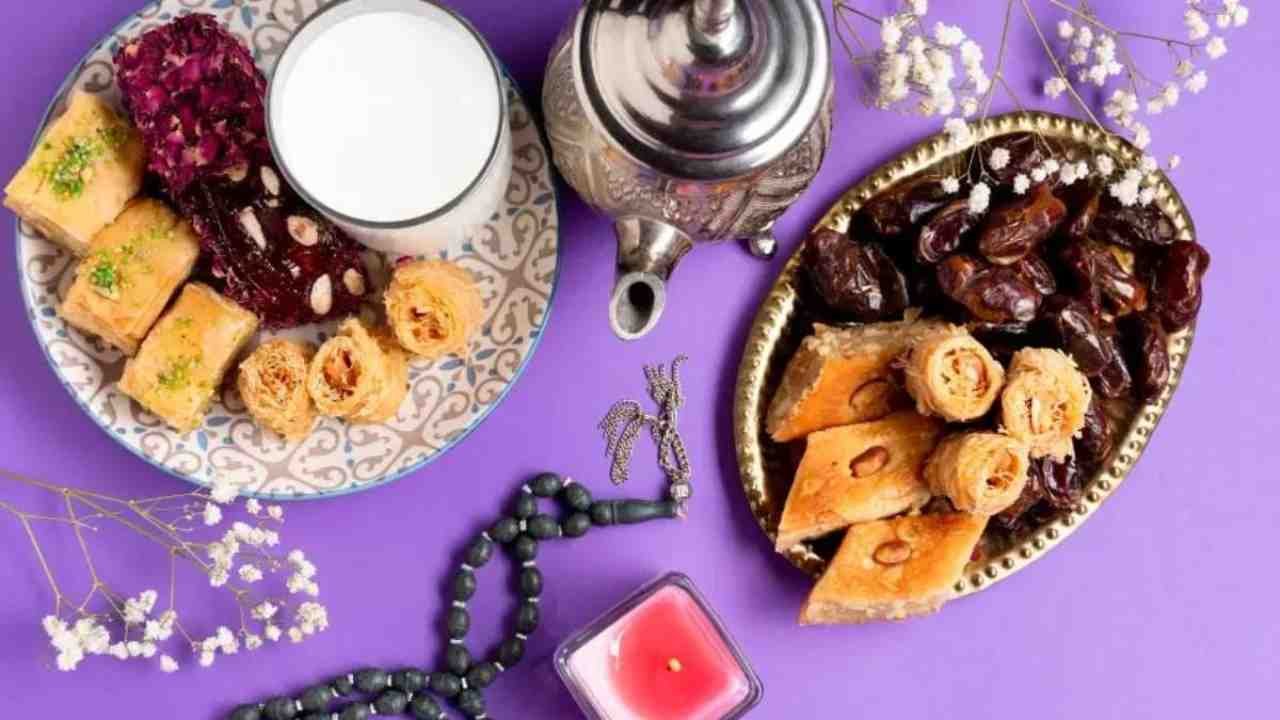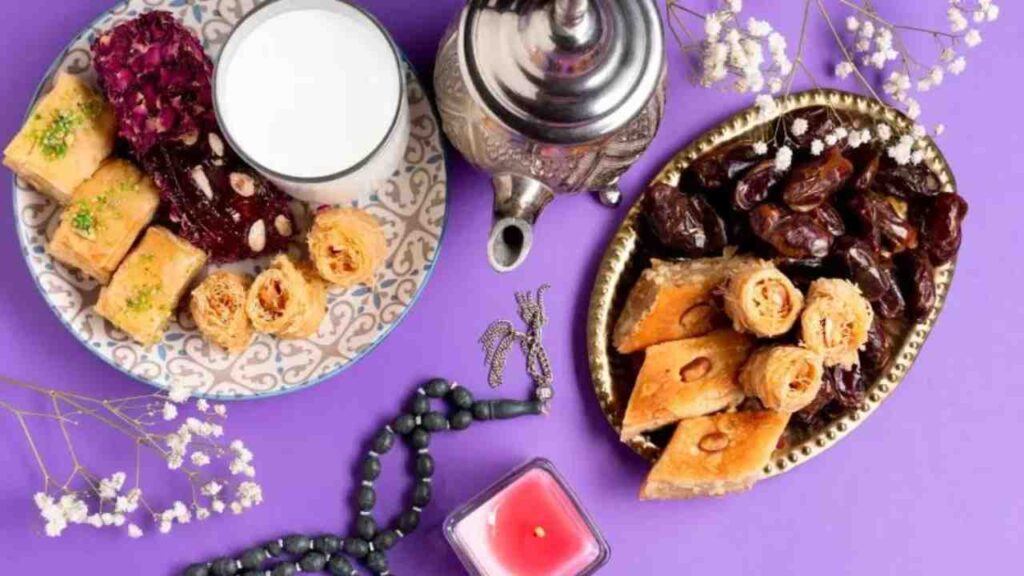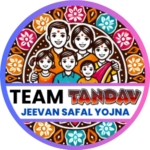Discover the diverse culinary legacy of Ramadan 2024 through these five authentic iftar desserts from around the world. Immerse yourself in cultural flavors and enhance your Ramadan journey with these sweet treats.

As the sun sets and the melodic call to prayer resonates through the air, Muslims worldwide eagerly anticipate the moment to break their fast during Ramadan, a sacred month marked by fasting, contemplation, and communal solidarity. Iftar, the evening meal where the day’s fast is ceremoniously ended, is a cherished occasion characterized by familial warmth, convivial gatherings, and a delectable array of culinary delights. Among the most eagerly anticipated elements of iftar are the desserts, which encompass a rich tapestry of flavors and techniques, each reflecting the unique culinary heritage of its respective region within the vast Muslim world.
From the bustling streets of Istanbul to the serene shores of Malaysia, iftar desserts serve as emblematic ambassadors of cultural identity and tradition. They symbolize not only the culmination of a day of spiritual discipline but also the celebration of shared values and communal bonds. Here, we present five quintessential iftar desserts from diverse corners of the globe, each offering a tantalizing glimpse into the rich tapestry of Ramadan culinary traditions.
Qatayef (Middle East)
Qatayef stands as a beloved emblem of Middle Eastern culinary heritage, particularly cherished during the sacred month of Ramadan. These delicate pancakes, intricately crafted with precision and care, offer a tantalizing fusion of textures and flavors that captivate the senses and evoke a sense of culinary nostalgia.
At the heart of Qatayef lies its exquisite filling, a symphony of sweet sensations that varies from region to region and household to household. Common fillings include a decadent blend of chopped nuts, fragrant spices, and a hint of citrus zest, lending a delightful crunch and depth of flavor to each bite. Alternatively, some opt for a luscious filling of creamy cheese or rich clotted cream, adding a velvety richness that harmonizes beautifully with the delicate pancake exterior.
The preparation of Qatayef is an art form in itself, requiring patience, skill, and a keen eye for detail. The batter, meticulously crafted from a blend of flour, yeast, and milk, is ladled onto a hot griddle, where it transforms into golden-hued pancakes, each boasting a delicate lacy pattern on one side. Once cooked to perfection, the pancakes are swiftly removed from the heat and generously filled with the desired mixture before being deftly folded into crescent shapes or parcels, ready to undergo the final transformation.
Whether gently fried to a golden crispness or baked in the oven until golden and fragrant, Qatayef exudes an irresistible allure, beckoning with promises of warmth and indulgence. But it is the crowning touch – a generous drizzle of aromatic syrup – that elevates these humble pancakes to celestial heights. Crafted from a harmonious blend of sugar, water, and either rose water or orange blossom water, the syrup imbues each Qatayef with a fragrant sweetness that lingers on the palate, a testament to the artistry and dedication of its creators.
Served warm and freshly prepared, Qatayef transcends mere sustenance to become a symbol of comfort, hospitality, and shared tradition. As families gather around the iftar table to break their fast and savor the blessings of Ramadan, the sight and aroma of these exquisite delicacies evoke a sense of joy and togetherness, uniting hearts and spirits in celebration of faith, community, and the timeless rituals that bind us together.
Baklava (Turkey/Greece/Levant)
Baklava, an iconic dessert renowned across the Middle East and beyond, stands as a testament to the artistry and indulgence of traditional pastry-making. Originating from the crossroads of cultures in Turkey, Greece, and the Levant, this exquisite delicacy has captivated palates for centuries with its harmonious blend of textures, flavors, and fragrances.
At the heart of Baklava lies its signature layers of delicate phyllo dough, painstakingly rolled and stretched to ethereal thinness, creating a canvas for the symphony of flavors that awaits within. Each layer is generously adorned with a lavish filling of finely chopped nuts, typically walnuts or pistachios, their buttery richness infusing the pastry with a satisfying crunch and depth of flavor that lingers on the palate.
But it is the syrup that truly elevates Baklava to celestial heights, transforming humble ingredients into a decadent indulgence fit for royalty. Crafted from a harmonious blend of honey, sugar, and fragrant spices such as cinnamon or cardamom, the syrup cascades over the layers of phyllo like liquid gold, imbuing each bite with a luscious sweetness that dances on the taste buds.
As the Baklava bakes to golden perfection, the layers of phyllo meld together, creating a crispy, flaky crust that shatters with each bite, giving way to a symphony of textures and flavors that delight the senses. Whether served warm from the oven or cooled to room temperature, Baklava exudes an irresistible allure, beckoning with promises of indulgence and satisfaction.
During the holy month of Ramadan, Baklava takes on added significance as a cherished symbol of hospitality, generosity, and celebration. Its intricate layers and syrupy sweetness make it a fitting centerpiece for iftar gatherings, where families and friends come together to break their fast and savor the blessings of the season.
Mahalabiya (Egypt)
Mahalabiya, a cherished gem among the culinary treasures of Egypt, is a creamy delight that transcends mere dessert to become a cherished symbol of familial togetherness and culinary tradition, particularly during the sacred month of Ramadan. Known interchangeably as Mahalabia or Muhallebi, this luscious pudding exudes an air of elegance and simplicity, captivating palates with its velvety texture and delicate floral fragrance.
At its heart, Mahalabiya is a marriage of humble ingredients transformed into a symphony of flavors and textures. Crafted from a base of milk, sugar, and cornstarch, each spoonful of this creamy indulgence offers a blissful escape into a world of sweetness and comfort. It is the infusion of rose water or orange blossom water that elevates Mahalabiya to ethereal heights, imparting a subtle yet captivating floral aroma that tantalizes the senses and evokes memories of blooming gardens and sun-drenched orchards.
Once prepared, Mahalabiya is lovingly allowed to chill and set, transforming into a velvety-smooth pudding that beckons with promises of coolness and refreshment. As it graces the iftar table, Mahalabiya is often adorned with a generous sprinkle of chopped nuts, such as almonds or pistachios, adding a delightful crunch and nutty richness to each luxurious bite. A dusting of ground cinnamon crowns this masterpiece, infusing it with a warm and comforting spice that harmonizes beautifully with its delicate floral notes.
Beyond its delectable taste and creamy texture, Mahalabiya embodies a sense of tradition and heritage, passed down through generations as a symbol of familial love and culinary craftsmanship. As families gather to break their fast and share in the blessings of Ramadan, Mahalabiya serves as a beacon of light, offering a moment of respite and joy amidst the solemnity of the occasion.
Sheer Khurma (South Asia)
Sheer Khurma, a delightful confluence of flavors and textures originating from the rich culinary tapestry of South Asia, emerges as a quintessential delicacy cherished during the auspicious month of Ramadan. Translating to “milk with dates” in Persian, this indulgent dessert embodies a harmonious blend of tradition, heritage, and culinary craftsmanship, inviting diners on a journey of sensory delight and cultural immersion.
At its core, Sheer Khurma is a symphony of ingredients meticulously crafted to create a velvety-smooth indulgence that tantalizes the palate and warms the soul. The foundation of this exquisite dish lies in the simmering of fine vermicelli noodles in milk, where they gradually soften and meld with the creamy richness of the dairy, creating a luscious base that serves as a canvas for the myriad flavors to follow.
To this opulent mixture, sugar is added, imparting a subtle sweetness that harmonizes beautifully with the aromatic notes of cardamom and saffron, infusing the Sheer Khurma with a depth of flavor that lingers on the palate. But it is the inclusion of chopped dates, nuts, and dried fruits that truly elevates this dessert to celestial heights, imparting a rich, nutty flavor and a chewy texture that adds layers of complexity and indulgence to each spoonful.
As Sheer Khurma gently simmers on the stove, the kitchen is enveloped in a fragrant embrace, as the tantalizing aroma of spices and sweet delights wafts through the air, beckoning with promises of comfort and indulgence. Once prepared, Sheer Khurma is lovingly ladled into bowls, its creamy richness punctuated by jewel-like gems of dates and nuts, a testament to the artistry and dedication of its creators.
Zulbia and Bamia (Iran)
Zulbia and Bamia, revered as iconic delicacies within the rich tapestry of Iranian cuisine, stand as timeless symbols of indulgence and culinary artistry, particularly celebrated during the auspicious month of Ramadan. Also known as Jalebi in various regions, these deep-fried pastries offer a tantalizing blend of textures, flavors, and fragrances that captivate the senses and evoke a sense of culinary nostalgia.
At their core, Zulbia and Bamia are crafted from a simple yet harmonious blend of ingredients, transformed through skillful technique and careful preparation into delectable treats that delight both young and old alike. The batter, a symphony of flour, yogurt, and saffron, is expertly mixed to achieve the perfect consistency – smooth, creamy, and infused with the vibrant hues of saffron, adding a touch of luxury to each bite.
Once the batter is prepared, it is artfully piped or drizzled into hot oil, where it sizzles and crisps to perfection, transforming into delicate, lacy pastries that boast a golden hue and a satisfying crunch. While Zulbia takes on an intricate, spiral-like shape, Bamia adopts a more rounded form, reminiscent of miniature doughnuts, each offering a unique visual appeal that adds to their allure.
But it is the final step – the dunking into a fragrant syrup infused with rose water or saffron – that truly elevates Zulbia and Bamia to culinary greatness. As the pastries soak up the sweet nectar, they imbibe the delicate floral aroma and golden hue of the syrup, transforming into irresistible delights that beckon with promises of sweetness and indulgence.
The top 20 frequently asked questions (FAQs) about Ramadan 2024 along with answers about 5 must-try traditional iftar desserts across the world:
- What is Ramadan? Ramadan is the ninth month of the Islamic lunar calendar, observed by Muslims worldwide as a month of fasting, prayer, reflection, and community.
- When is Ramadan 2024? Ramadan 2024 is expected to begin on Thursday, March 14, and end on Friday, April 12, depending on the sighting of the moon.
- What is the significance of Ramadan? Ramadan holds great spiritual significance for Muslims as it commemorates the revelation of the Quran to Prophet Muhammad (peace be upon him) and is considered a time of heightened spirituality, self-discipline, and devotion.
- Do all Muslims fast during Ramadan? Fasting during Ramadan is obligatory for adult Muslims, except for those who are ill, pregnant, nursing, menstruating, traveling, or elderly. Children are not required to fast until they reach puberty.
- What are the timings for fasting during Ramadan? Muslims fast from dawn (Fajr) until sunset (Maghrib), refraining from eating, drinking, smoking, and engaging in sinful behavior during daylight hours.
- What is iftar? Iftar is the evening meal with which Muslims break their fast at sunset during Ramadan.
- What are traditional iftar desserts? Traditional iftar desserts vary widely across different cultures and regions but often include sweet treats that are rich in flavor and symbolism.
- Can you suggest some must-try traditional iftar desserts? Certainly! Five must-try traditional iftar desserts from around the world include:
- Qatayef (Middle East)
- Baklava (Turkey/Greece/Levant)
- Mahalabiya (Egypt)
- Sheer Khurma (South Asia)
- Zulbia and Bamia (Iran)
- What is Qatayef? Qatayef is a popular Middle Eastern dessert consisting of delicate pancakes filled with a sweet mixture of nuts, cheese, or cream, then folded and either fried or baked.
- What is Baklava? Baklava is a rich pastry made of layers of phyllo dough filled with chopped nuts, usually walnuts or pistachios, and sweetened with honey or syrup. It is often flavored with warming spices like cinnamon or cardamom.
- What is Mahalabiya? Mahalabiya, also known as Mahalabia or Muhallebi, is a creamy pudding made from milk, sugar, and cornstarch, flavored with rose water or orange blossom water, and often garnished with chopped nuts and ground cinnamon.
- What is Sheer Khurma? Sheer Khurma, meaning “milk with dates” in Persian, is a traditional South Asian dessert made by simmering vermicelli noodles in milk, sweetening with sugar, and flavoring with cardamom and saffron. It is enriched with chopped dates, nuts, and dried fruits.
- What is Zulbia and Bamia? Zulbia and Bamia, also known as Jalebi in some regions, are deep-fried pastries soaked in sugar syrup. Zulbia is made from a batter of flour, yogurt, and saffron, while Bamia is made from a similar batter but shaped differently, resembling small doughnuts.
- Are these desserts only eaten during Ramadan? While these desserts hold special significance during Ramadan and are commonly enjoyed during iftar, they may also be served on other festive occasions and celebrations throughout the year.
- What makes these desserts special for Ramadan? These desserts are cherished during Ramadan for their rich flavors, cultural significance, and ability to bring families and communities together during the holy month.
- Can I find these desserts outside their respective regions? Yes, many of these traditional iftar desserts have gained popularity worldwide and can often be found in Middle Eastern, South Asian, or Mediterranean restaurants and markets.
- Are there any variations to these desserts? Yes, variations of these desserts may exist based on regional preferences, family recipes, and personal tastes. Each variation adds its own unique twist to the traditional recipes.
- Can I make these desserts at home? Yes, recipes for these traditional iftar desserts are widely available online and in cookbooks, allowing you to recreate these delicious treats in the comfort of your own kitchen.
- Are these desserts suitable for all dietary restrictions? While some of these desserts may contain dairy or nuts, there are often alternative recipes available to accommodate dietary restrictions such as lactose intolerance or nut allergies.
- Where can I learn more about Ramadan and traditional iftar foods? You can learn more about Ramadan and traditional iftar foods through books, online resources, community events, and by engaging with friends and family members who observe the holy month.
Register for My Upcoming Masterclass HERE
See You in the Live Masterclass
Sunil Chaudhary stands as a preeminent global Leading digital coach, boasting a diverse clientele hailing from over 50 nations. Renowned for his prowess as an exemplary SEO expert, business automation coach, and landing page authority, Chaudhary also holds the distinction of being esteemed as the finest business coach in India. Beyond technical domains, he imparts invaluable insights into mindset, success, and life skills, thus encompassing a holistic approach to mentorship.
Join FREE Courses HERE
Know The Author:
 Sunil Chaudhary aka Suniltams Guruji is India’s Leading Digital Coach. He provides complete Digital Skill Development Coaching with great support. Sunil has trained more than 25000 students and helped more than 1100 businesses so far. Sunil is a well-known face across the world for Digital Coaching.
Sunil Chaudhary aka Suniltams Guruji is India’s Leading Digital Coach. He provides complete Digital Skill Development Coaching with great support. Sunil has trained more than 25000 students and helped more than 1100 businesses so far. Sunil is a well-known face across the world for Digital Coaching.
Digital Success Coach | Best SEO Coach India | Mindset Coach | Life Success Coach
Related posts:
 Ramadan 2024: 3 Healthy Sehri Meal Ideas for a Fulfilling Fast
Ramadan 2024: 3 Healthy Sehri Meal Ideas for a Fulfilling Fast
 Ramadan 2024: 5 Essential Self-Care Practices to Enhance Your Well-being
Ramadan 2024: 5 Essential Self-Care Practices to Enhance Your Well-being
 Ramadan 2024: Mindful Eating to Light Exercise – 5 Ways to Prepare Your Body and Mind for Ramzan Fasting
Ramadan 2024: Mindful Eating to Light Exercise – 5 Ways to Prepare Your Body and Mind for Ramzan Fasting
 5 Rose-Infused Recipes to Elevate Your Ramadan 2024
5 Rose-Infused Recipes to Elevate Your Ramadan 2024
 Ramadan 2024: 5 healthy sehri recipes to keep you full and energetic all day long
Ramadan 2024: 5 healthy sehri recipes to keep you full and energetic all day long
 Healthy Eating Habits for Women of All Ages
Healthy Eating Habits for Women of All Ages
 Superfood Coconut: Know These 5 Benefits of this Edible Fruit
Superfood Coconut: Know These 5 Benefits of this Edible Fruit
 Cherries to Bananas: 5 Superfoods to Help You Get a Restful Night of Sleep
Cherries to Bananas: 5 Superfoods to Help You Get a Restful Night of Sleep
 Holi 2024: 5 Dietary Changes to Shed Pounds Before This Festive Season
Holi 2024: 5 Dietary Changes to Shed Pounds Before This Festive Season









